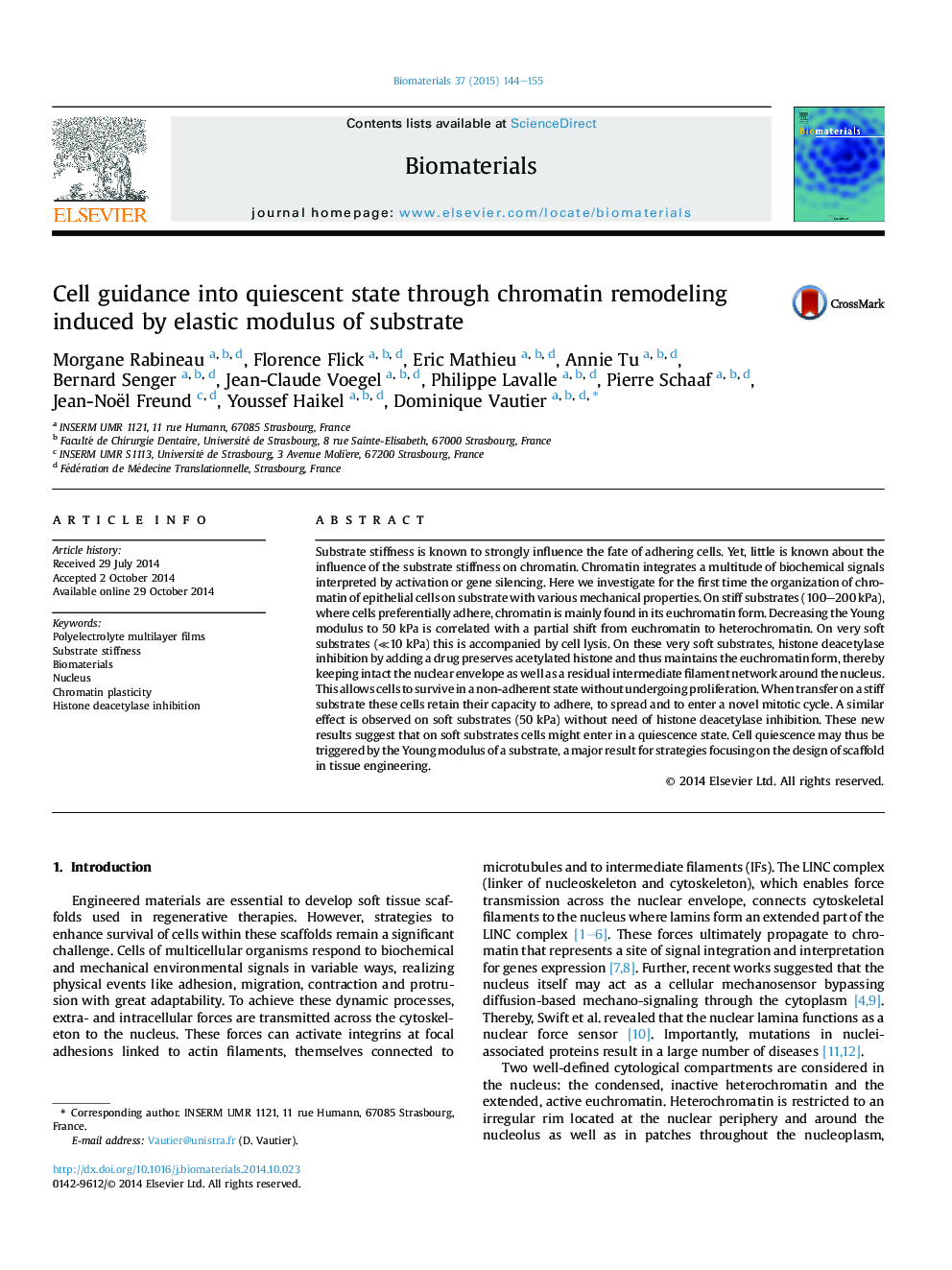| Article ID | Journal | Published Year | Pages | File Type |
|---|---|---|---|---|
| 6486424 | Biomaterials | 2015 | 12 Pages |
Abstract
Substrate stiffness is known to strongly influence the fate of adhering cells. Yet, little is known about the influence of the substrate stiffness on chromatin. Chromatin integrates a multitude of biochemical signals interpreted by activation or gene silencing. Here we investigate for the first time the organization of chromatin of epithelial cells on substrate with various mechanical properties. On stiff substrates (100-200 kPa), where cells preferentially adhere, chromatin is mainly found in its euchromatin form. Decreasing the Young modulus to 50 kPa is correlated with a partial shift from euchromatin to heterochromatin. On very soft substrates (âª10 kPa) this is accompanied by cell lysis. On these very soft substrates, histone deacetylase inhibition by adding a drug preserves acetylated histone and thus maintains the euchromatin form, thereby keeping intact the nuclear envelope as well as a residual intermediate filament network around the nucleus. This allows cells to survive in a non-adherent state without undergoing proliferation. When transfer on a stiff substrate these cells retain their capacity to adhere, to spread and to enter a novel mitotic cycle. A similar effect is observed on soft substrates (50 kPa) without need of histone deacetylase inhibition. These new results suggest that on soft substrates cells might enter in a quiescence state. Cell quiescence may thus be triggered by the Young modulus of a substrate, a major result for strategies focusing on the design of scaffold in tissue engineering.
Keywords
Related Topics
Physical Sciences and Engineering
Chemical Engineering
Bioengineering
Authors
Morgane Rabineau, Florence Flick, Eric Mathieu, Annie Tu, Bernard Senger, Jean-Claude Voegel, Philippe Lavalle, Pierre Schaaf, Jean-Noël Freund, Youssef Haikel, Dominique Vautier,
